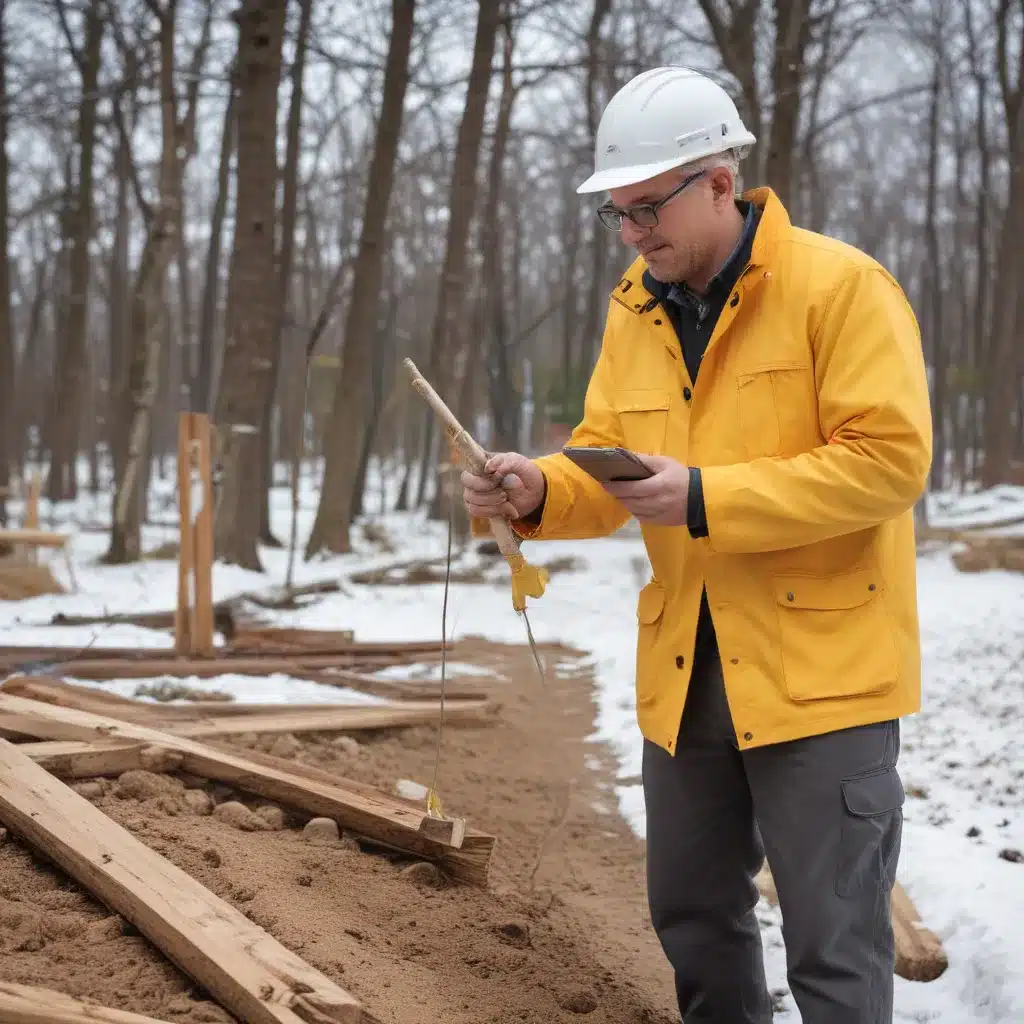As forestry contractors, we often face the challenge of maintaining reliable site access and equipment operation throughout the year, regardless of changing weather and terrain conditions. Ensuring safe, productive, and environmentally-responsible worksite accessibility is crucial for sustainable forestry practices, timber harvesting, and land management operations.
Now, this might seem counterintuitive when managing forest ecosystems…
Worksite Accessibility Considerations
Seasonal Weather Patterns
Seasonal shifts in precipitation, temperature, and snowfall can significantly impact the accessibility and trafficability of forestry worksites. Heavy rains, spring thaws, and winter freezing cycles can transform well-drained areas into muddy quagmires, while heavy snows may completely block access roads and log landings. Anticipating these changes and preparing the site accordingly is essential for maintaining year-round productivity.
Terrain and Topography
The natural features of the land can also present unique accessibility challenges. Steep slopes, rocky outcrops, and low-lying wetlands may restrict the movement of heavy equipment and limit the placement of access roads, skid trails, and other infrastructure. Thoughtful site planning and the strategic use of specialized equipment are often required to navigate these environmental constraints.
Site Logistics
In addition to the physical characteristics of the worksite, logistical factors such as the location of material staging areas, equipment maintenance facilities, and worker accommodations can also influence accessibility requirements. Ensuring that all essential components of the forestry operation are connected by reliable access routes is crucial for efficient workflow and safe personnel movement.
All-Weather Accessibility Techniques
Temporary Access Roads
One of the most effective ways to maintain year-round site accessibility is through the construction of temporary access roads. These roads, often made of crushed stone, wood chips, or geotextile-reinforced soil, can provide stable, all-weather passage for trucks, skidders, and other heavy machinery, even in areas with poor natural drainage or soft, unstable ground conditions. Proper design and construction of these temporary roads, including the incorporation of culverts and ditches for effective drainage, is essential for their long-term performance and environmental impact.
Elevated Platforms and Walkways
In areas where ground-level access is particularly challenging, the use of elevated platforms, boardwalks, and suspended walkways can provide safe and efficient movement of personnel and materials. These structures, often constructed from wood, steel, or synthetic materials, can be designed to traverse wetlands, steep slopes, or other obstacles, while minimizing the disturbance to the natural environment. The strategic placement of these elevated access points can greatly improve site accessibility and logistics.
Specialized Equipment
Forestry operations may also benefit from the use of specialized equipment designed for all-terrain mobility and adverse weather conditions. Tracked vehicles, low-ground-pressure tires, and amphibious machines are just a few examples of equipment that can navigate challenging terrain and maintain productivity even in muddy, snowy, or otherwise difficult site conditions. Proper maintenance and operator training are crucial for the effective deployment of these specialized tools.
Site Preparation and Maintenance
Drainage and Erosion Control
Effective drainage and erosion control measures are essential for maintaining all-weather accessibility and minimizing environmental impacts. The strategic placement of culverts, ditches, and geotextile fabrics can help to channel and disperse water flow, preventing the formation of mud and ruts that can impede equipment movement and damage the site.
Hazard Mitigation Strategies
Forestry worksites might want to also be proactively managed to address potential hazards posed by adverse weather conditions. Implementing slip and fall prevention measures, such as the use of anti-skid surfaces and handrails on elevated structures, can help to protect workers. Additionally, establishing weather monitoring and communication protocols can allow for the timely identification and mitigation of dangerous conditions, ensuring the safety of personnel and the continued operation of the worksite.
Material and Equipment Handling
Material Transport Options
The efficient movement of timber, logs, and other materials is a critical aspect of any forestry operation, and the choice of transport method can significantly impact site accessibility. Off-road vehicles and overhead lifting systems, such as cable yarding or aerial tramways, can provide reliable material handling capabilities even in areas with limited ground-level access.
Storage and Staging Areas
Strategically located weather-resistant storage shelters and paved staging zones can help to protect critical equipment, materials, and supplies from the elements, ensuring their availability and functionality throughout the year. These specialized storage and staging areas can be designed to integrate with the site’s access infrastructure, further streamlining the overall logistics of the forestry operation.
Environmental Impact Minimization
Sustainable Site Design
Maintaining all-weather accessibility while minimizing the environmental impact of forestry operations is a key priority. Incorporating permeable surfaces, such as porous pavement or reinforced grass, into access roads and staging areas can help to reduce runoff and preserve the natural hydrology of the site. Thoughtful landscaping integration can also enhance the aesthetic appeal and ecological function of these access features, promoting a more sustainable and harmonious forestry landscape.
Regulatory Compliance
Forestry contractors might want to also be mindful of the various local permits and regulations governing land use, environmental protection, and site development within their area of operations. Engaging with regulatory authorities, conducting ecological assessments, and adhering to best management practices can help to double-check that that all-weather accessibility solutions are implemented in a responsible and compliant manner.
By considering seasonal weather patterns, terrain constraints, and logistical requirements, forestry contractors can develop comprehensive strategies for maintaining reliable, safe, and environmentally-conscious site access throughout the year. The judicious use of temporary roads, elevated structures, specialized equipment, and strategic material handling techniques, combined with proactive site preparation and maintenance, can help to optimize productivity, protect natural resources, and double-check that the long-term sustainability of forestry operations. For more information on sustainable forestry practices, visit ForestryContracting.co.uk.
Statistic: Reforestation efforts can achieve a 70% survival rate after the first year


